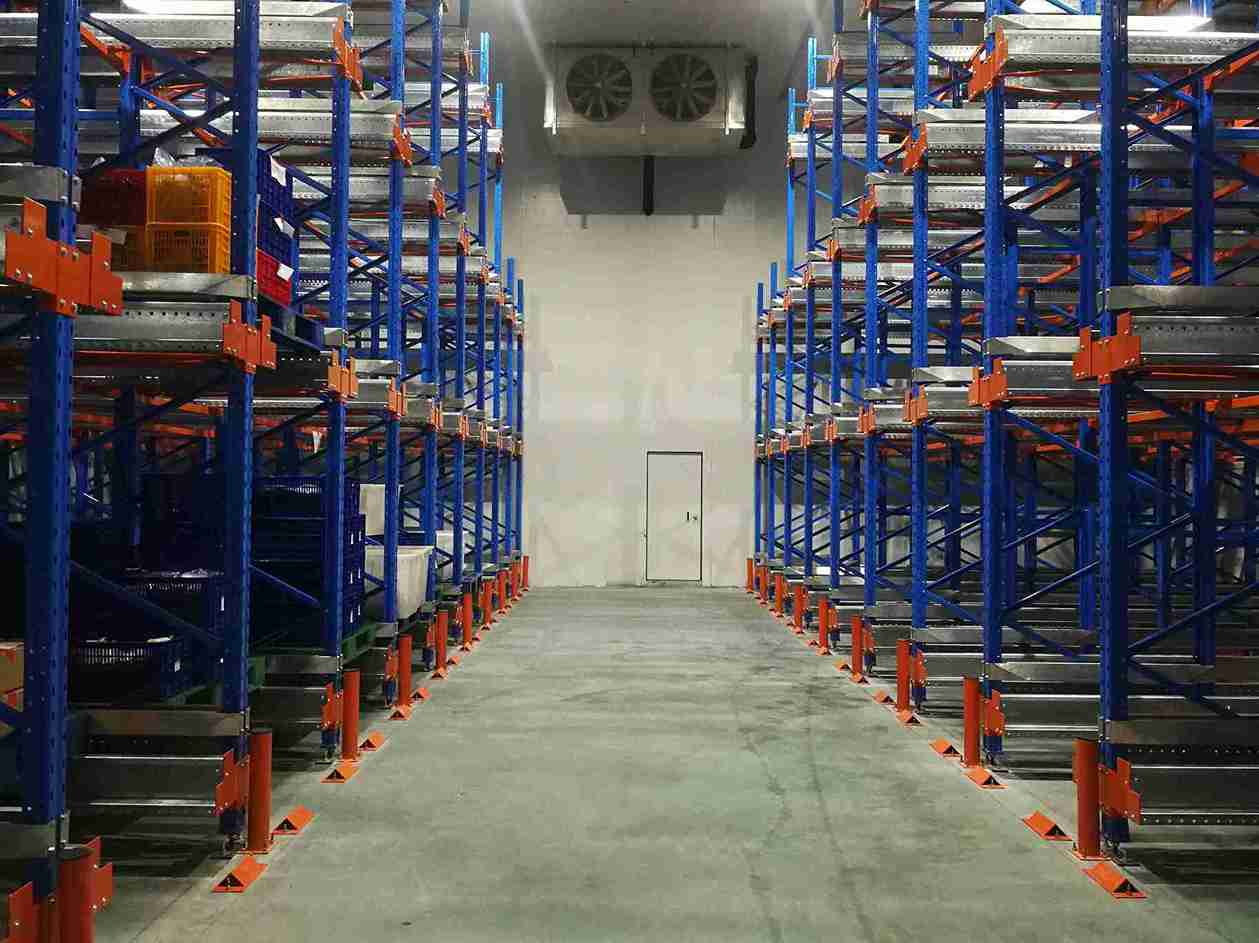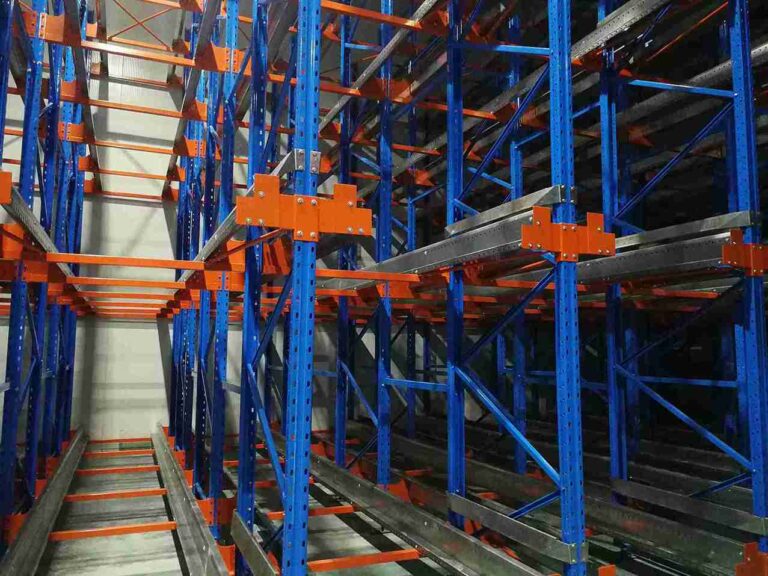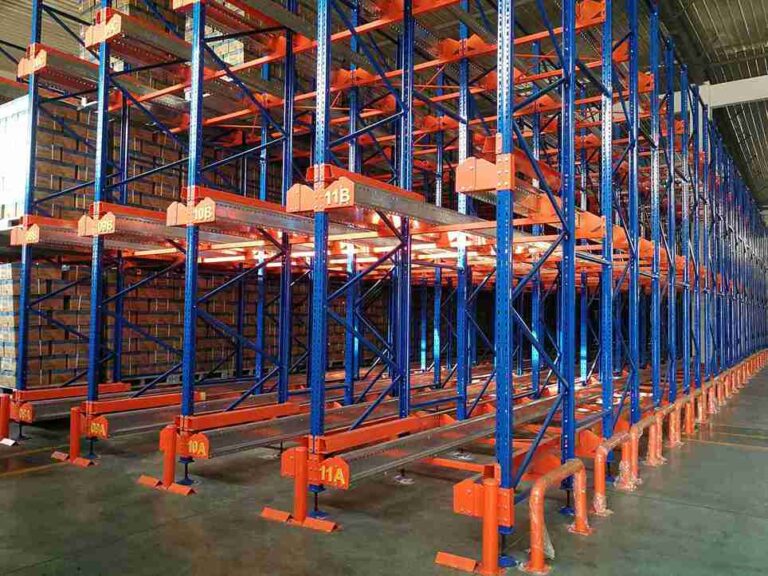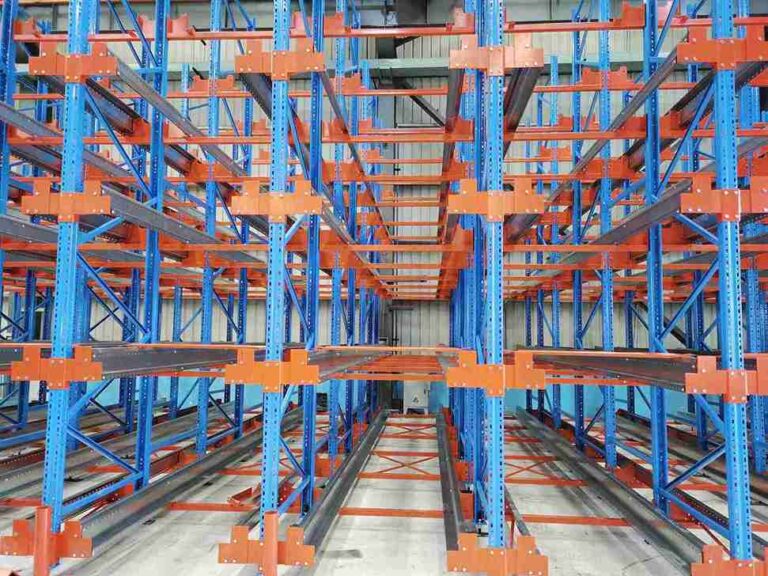📐 "First 50 Enterprise Queries Get Custom 3D Warehouse Design" Plan

Implementing a cold storage shuttle racking system is not merely about installing off-the-shelf components. The sub-zero environment demands a level of engineering precision and material science that goes far beyond standard warehouse solutions. Every element, from the metallurgy of the steel to the lubricants in the shuttle cart, must be meticulously selected to perform reliably in a constant state of freeze-thaw cycles and high humidity.
A premier provider of cold storage shuttle racking solutions will approach the design phase with a forensic focus on environmental specifics. The structural integrity of the racking itself is paramount. High-grade, low-carbon steel is often employed, treated with specialized powder coatings designed to resist brittleness and prevent micro-fractures that can form in extremely cold temperatures. This ensures the cold storage shuttle racking structure can withstand not only the immense weight of stored goods but also the physical stresses induced by the constant cold.
Furthermore, the shuttle carts themselves are marvels of engineering built for the cold. Unlike standard automation, these robots are equipped with components specifically hardened for freezer environments. This includes:
Cold-rated batteries: Standard lithium-ion batteries suffer severe performance degradation in the cold. Cold storage shuttle racking systems utilize batteries with advanced thermal management systems that maintain optimal operating temperature, ensuring consistent power and longevity throughout a shift.
Specialized lubricants: Ordinary greases and oils thicken and solidify, leading to mechanical failure. All moving parts in a cold storage shuttle racking system use synthetic lubricants that remain viscous at temperatures as low as -30°C (-22°F).
Condensation and frost mitigation systems: Electronic components are susceptible to moisture damage from condensation. Shuttles designed for cold storage shuttle racking applications are sealed and may include positive pressure systems or internal heating elements to keep critical circuitry dry and frost-free.
This attention to detail is what separates a robust, high-uptime cold storage shuttle racking installation from a problematic one. It underscores the necessity of partnering with an expert whose experience is rooted in the unique demands of temperature-controlled logistics, ensuring the system’s resilience from the ground up.

Software: The Intelligent Brain Behind the Automated Muscle
While the physical cold storage shuttle racking hardware is impressive, its true intelligence is derived from the sophisticated Warehouse Control Software (WCS) that governs it. This software is the central nervous system, transforming a collection of racks and robots into a seamlessly intelligent storage organism.
For a cold storage shuttle racking system, the software is programmed with a deep understanding of energy and operational efficiency. It doesn’t just store pallets randomly; it uses complex algorithms to determine the most optimal location for every single pallet based on pre-defined rules. This is a critical feature for cold storage, where product rotation is often governed by strict FIFO (First-In, First-Out) or FEFO (First-Expired, First-Out) protocols. The software automatically assigns incoming pallets to the correct sequence, ensuring perfect rotation and drastically reducing the risk of spoilage and waste.
Moreover, the software enhances energy savings. By coordinating the retrieval of multiple pallets for the same outbound order, the system can minimize the number of times the access door to the high-density storage area needs to be opened. It can sequence tasks to create batches, keeping the door sealed for longer periods and maintaining a stable thermal environment. This intelligent sequencing, unique to advanced cold storage shuttle racking software, contributes significantly to the overall reduction in energy consumption.
The reporting and data analytics capabilities provide an unprecedented level of visibility. Managers have a real-time, digital twin of their entire inventory within the cold storage shuttle racking system. They can generate reports on throughput rates, shuttle utilization, energy savings metrics, and inventory accuracy. This data is invaluable for continuous improvement, capacity planning, and providing auditable proof of compliance for clients in the pharmaceutical and food industries.
<h2> A Comparative Analysis: Shuttle Racking vs. Other Cold Storage Solutions </h2>
To fully appreciate the value proposition of cold storage shuttle racking, it is helpful to contextualize it against other common storage solutions for freezer environments.
Vs. Traditional Selective Pallet Racking: The difference is night and day. Selective racking, with its wide aisles, is inherently wasteful of space and energy. It relies entirely on manual labor, with all the associated costs and risks. A cold storage shuttle racking system typically doubles or triples storage density within the same footprint and reduces labor dependency by over 60%, offering a clear and superior ROI for most operations.
Vs. Drive-In/Drive-Thru Racking: While drive-in systems offer good density, they operate on a LIFO (Last-In, First-Out) basis, which is unsuitable for most perishable goods. They also require forklifts to drive deep into the rack structure, which is dangerous, causes damage to racks and products, and introduces heat and exhaust fumes into the storage environment. Cold storage shuttle racking enables true FIFO, removes the forklift from the equation, and maintains a pristine, uncontaminated atmosphere.
Vs. Fully Automated AS/RS (Automatic Storage and Retrieval Systems): A fully automated crane-based AS/RS is the pinnacle of automation but comes with a significantly higher capital cost. Cold storage shuttle racking is often described as a “semi-automated” solution that delivers 80% of the benefits of a full AS/RS for perhaps 50% of the cost. It represents the sweet spot for many companies looking to automate without the immense investment of a greenfield, fully robotic warehouse.
This comparison solidifies the position of cold storage shuttle racking as the most balanced and accessible automation technology for cold storage operations seeking a transformative upgrade in efficiency, cost-control, and density.
<h2> The Implementation Blueprint: A Partnership for Success </h2>
The journey to a operational cold storage shuttle racking system is a significant undertaking that thrives on partnership and meticulous planning. A world-class provider does not simply sell equipment; they sell a solution and manage its integration from conception to operation.
The process typically unfolds in a series of well-defined stages:
Deep-Dive Discovery and Data Harvesting: The first step is a collaborative effort to gather and analyze terabytes of operational data. This includes pallet dimensions, weight profiles, daily inbound/outbound volumes, peak season surges, SKU velocity, and future growth projections. This data is the foundation upon which the entire cold storage shuttle racking system is designed.
Feasibility Modeling and ROI Forecasting: Using advanced simulation software, the provider will create a digital model of the proposed cold storage shuttle racking system. This model runs through countless scenarios to predict throughput, identify potential bottlenecks, and, most importantly, generate a precise financial model projecting labor savings, energy reduction, and capacity gains. This transparent ROI forecast is crucial for securing executive buy-in.
Phased Installation with Minimal Disruption: Understanding that a cold storage facility cannot simply shut down, a professional installation is meticulously phased. Work is often scheduled during off-peak hours or seasons. The installation team coordinates closely with the facility’s management to ensure that ongoing operations are impacted as little as possible, often building and commissioning the new cold storage shuttle racking system in sections while the rest of the warehouse continues to function.
Comprehensive Training and Change Management: A system is only as good as the people who use it. A key part of the implementation is thorough training for operators, maintenance staff, and IT personnel. This empowers the client’s team to take ownership of the system, understand its capabilities, and perform basic troubleshooting, ensuring smooth day-to-day operations.
Long-Term Support and Continuous Optimization: The relationship does not end at go-live. Offering remote monitoring, preventative maintenance plans, and software updates is standard for a top-tier provider. This ensures the cold storage shuttle racking system continues to perform at its peak for years to come and can adapt to the evolving needs of the business.
Conclusion: The Imperative for Automated Cold Storage Excellence
The landscape of cold chain logistics is more competitive and demanding than ever. Consumer expectations for fresh, high-quality products, coupled with rising operational costs and stringent safety regulations, have created a powerful imperative for innovation. In this context, continuing to rely on manual, energy-inefficient, and space-wasting storage methods is a significant strategic risk.
Cold storage shuttle racking is not a futuristic concept; it is a proven, scalable, and highly effective technology that is delivering measurable ROI for forward-thinking cold storage operators today. It is the definitive answer to the industry’s twin challenges of labor and energy costs, while simultaneously unlocking new levels of inventory accuracy, safety, and storage capacity.
Investing in a cold storage shuttle racking system is an investment in the future resilience, profitability, and competitiveness of a cold storage business. It is a decisive step toward building a smarter, more sustainable, and more profitable operation that is prepared to meet the challenges and opportunities of the coming decade.
For any cold storage operator seeking to elevate their efficiency and secure their market position, the path forward is clear. The time to explore the transformative potential of cold storage shuttle racking is now.
Frequently Asked Questions (FAQs)
1. How does the shuttle system handle different pallet sizes or weights within the same rack?
The system is highly adaptable. Shuttle carts can be configured with adjustable width forks or different model sizes (e.g., standard, heavy-duty) to handle a range of pallet dimensions and weights. The management software is aware of each pallet’s specifications and will only assign it to a location and deploy a shuttle that is rated for that specific load, ensuring safe and efficient operation. This flexibility is a core strength of a well-designed cold storage shuttle racking installation.
2. What happens if a shuttle cart breaks down or loses power inside the rack?
Redundancy and serviceability are key design considerations. Systems are typically designed with multiple shuttle carts. If one fails, others can often access adjacent lanes to continue operations while the faulty unit is serviced. Furthermore, most shuttles have manual retrieval modes or can be easily extracted by a technician using a portable unit, minimizing any potential disruption. This fail-safe design is critical for maintaining uptime in a high-stakes cold storage shuttle racking environment.
3. Can automated shuttle racking be integrated with other automation like AMRs or conveyor systems?
Absolutely. This is where the system’s true potential is unlocked. The pickup and drop-off (P&D) points of a cold storage shuttle racking system can be seamlessly connected to conveyor systems or automated guided vehicles (AGVs) and autonomous mobile robots (AMRs). This creates a fully automated material flow where pallets are transported from the dock to the racking system and into storage without any human intervention, enabling true “lights-out” cold storage operations and maximizing the ROI on automation.
4. Is the racking structure different from traditional pallet racking? Is it stronger?
Yes, the structural design is fundamentally different and more robust. High-density storage systems like cold storage shuttle racking must be engineered to handle higher loads and different force distributions. Because the racks are often very tall and deep without internal aisles, they act as a single, solid structure. They require deeper upright frames, heavier-duty beams, and often incorporate specialized bracing to ensure stability and safety, especially in seismic zones. This is why professional engineering is non-negotiable for any cold storage shuttle racking project.
5. We have an existing building. Can a shuttle system be retrofitted into our current cold storage warehouse?
In most cases, yes. Retrofit projects are common. The feasibility depends on key factors like your building’s clear height, floor flatness, column spacing, and the condition of your existing refrigeration system. The process often involves removing old racking and preparing the site for the new high-density structure. A site survey by an engineering team is the first step to determining the perfect retrofit solution that maximizes your existing space with a cold storage shuttle racking system.
Welcome to contact us, if you need warehouse rack CAD drawings. We can provide you with warehouse rack planning and design for free. Our email address is: jili@geelyracks.com




